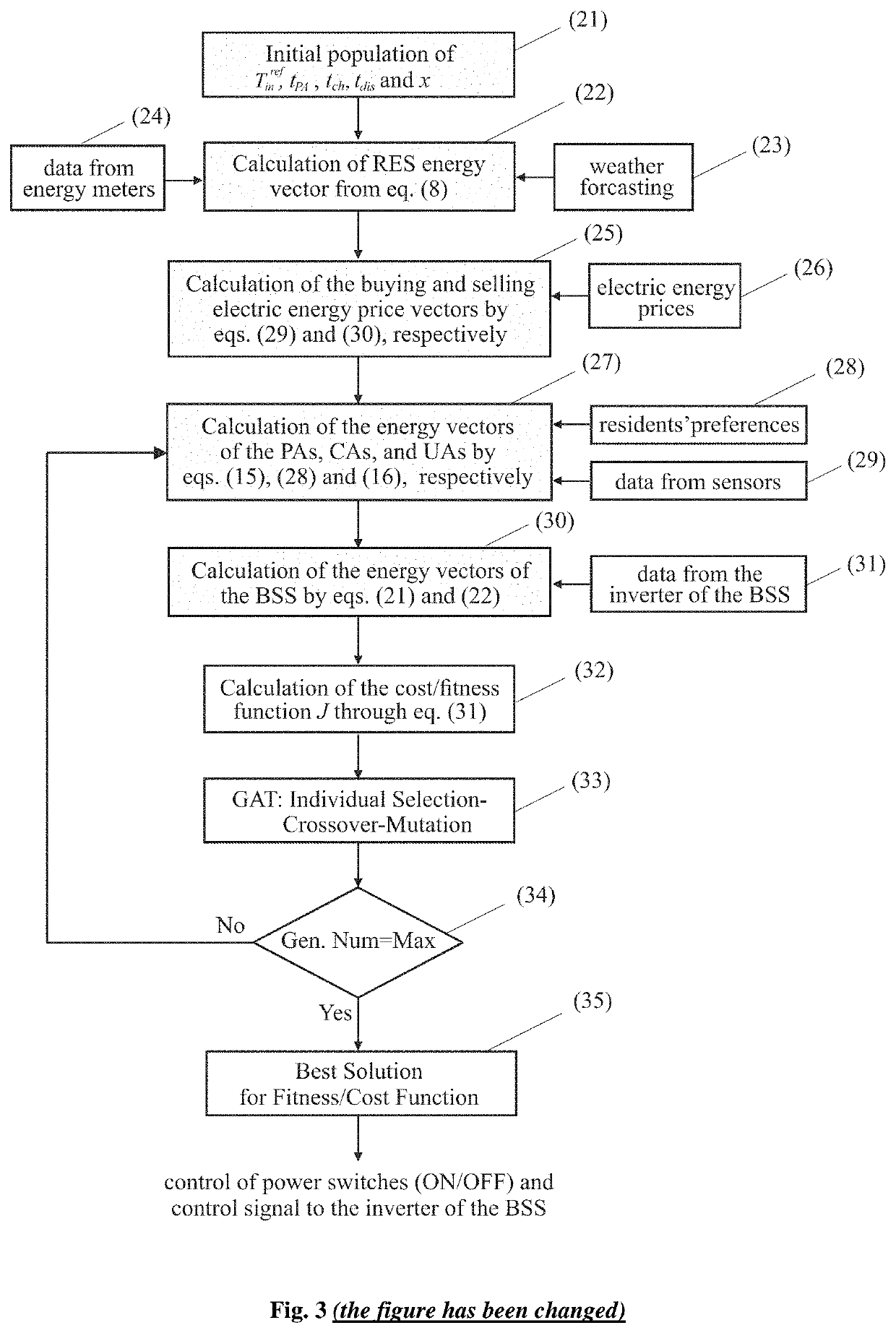Method for Improving the Performance of the Energy Management in a Nearly Zero Energy Building
- Summary
- Abstract
- Description
- Claims
- Application Information
AI Technical Summary
Benefits of technology
Problems solved by technology
Method used
Image
Examples
Embodiment Construction
[0020]In FIG. 1, a typical schematic of the microgrid and the EMS of the present invention for a nZEB is illustrated. It consists of the main grid (1), energy meters (2), temperature sensors (15), RES (3), BSS (10), programmable appliances (12), controllable appliances (14), unschedulable appliances (16) and a controller that houses the energy management software and has the capability to obtain input data through a human machine interface (17), i.e. acceptable starting and ending time-slots of the programmable appliances (18), real time buying and selling electric energy prices (19) obtained by an electric energy provider utility, and weather forecast (20) obtained by a weather forecast utility. The RES comprises the PVs (4), the WTs (5) and the corresponding power converters to connect them with the grid i.e. the AC / DC and DC / AC converters (6) and (8), respectively, for the WT, and the DC / AC converter (7) for the PV. The BSS consists of the battery pack (11) and the DC / AC power in...
PUM
 Login to View More
Login to View More Abstract
Description
Claims
Application Information
 Login to View More
Login to View More - R&D
- Intellectual Property
- Life Sciences
- Materials
- Tech Scout
- Unparalleled Data Quality
- Higher Quality Content
- 60% Fewer Hallucinations
Browse by: Latest US Patents, China's latest patents, Technical Efficacy Thesaurus, Application Domain, Technology Topic, Popular Technical Reports.
© 2025 PatSnap. All rights reserved.Legal|Privacy policy|Modern Slavery Act Transparency Statement|Sitemap|About US| Contact US: help@patsnap.com



